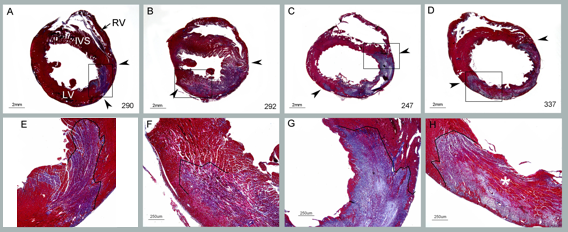The preclinical occlusion-induced myocardial infarct model is a well-known technique for investigating the cardio-protection of a drug therapy in the event of ischemia/reperfusion injury. The advantage of the model is the ability to study the functional relevance of a drug treatment on the heart following direct coronary flow and the mechanisms by which the drug promotes myocardial protection.
Occlusion of the left coronary artery is performed to mimic myocardial infarction in humans that results from occlusion of arteriosclerotic plaques of coronary arteries. Using this model, scientists can get a better understanding of the functional, structural and molecular changes associated with clinical ischemic heart disease as well as investigate the cardio-protection of potential drug therapies. Following the 45 minutes of LAD occlusion, the LAD is opened and coronary blood flow is allowed. Therefore, any IV dosed drug will reach the heart tissue and the infarct area immediately.

Figure: Histology on four heart tissue samples from a vehicle treated group (A-B) and an active compound group (C-D) in the occlusion-induced ischemia reperfusion injury model. Occlusion duration was 45 minutes and reperfusion was over 48 hours. Slides A-D: transverse section of the heart at 0.5x magnification. Slides E-H: 4x magnification of slides A-D showing the scarred myocardium.
MD Biosciences offers the occlusion-induced IR injury model as a contract research services. Study design can be customized to determine the duration of reperfusion following a 45-minute occlusion period. Readouts of the occlusion-induced ischemia-reperfusion injury model include histology of the heart as well as CPK and Troponin levels, which are relevant blood markers of myocardial infarction.

Download the whitepaper to review details and further data on the model or speak to a scientist about evaluating a compound in the occlusion-induced IR model.







